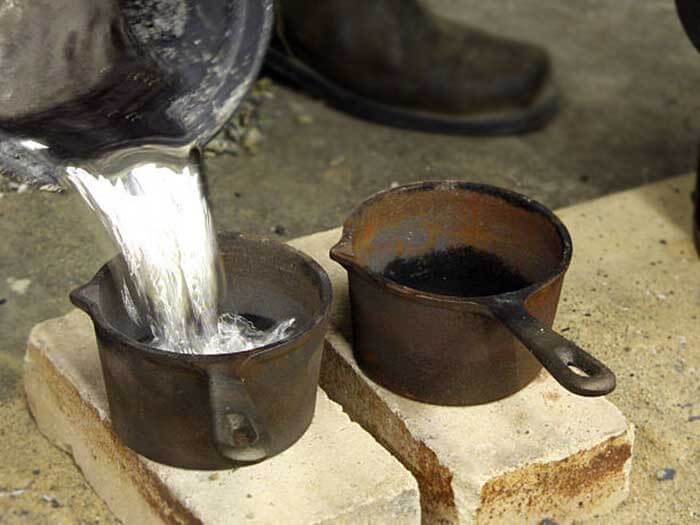Aluminum is a remarkable metal, known for its versatility, workability, and lightweight properties. With a melting point that is high enough to be useful in a myriad of applications, it is no wonder that this element is the third most abundant in the Earth’s crust and the most used non-ferrous metal after steel. In this blog post, we will explore the melting point of aluminum, its implications for different aluminum alloys, the factors that affect this critical property, its applications, and how it compares to other metals.

The melting point of aluminum is a fundamental property that affects its use in various industries. The melting point of pure aluminum is 660.32°C (1220.58°F). However, when other elements are added to make aluminum alloys, the melting point may change. The following is a melting point chart of eight series of forged aluminum alloys:
| Series | Melting Point (°C) | Melting Point (°F) |
|---|---|---|
| 1000 Series Aluminum | 643 – 660 | 1190 – 1220 |
| 2000 Series Aluminum Alloy | 502 – 670 | 935 – 1240 |
| 3000 Series Aluminum Alloy | 629 – 655 | 1170 – 1210 |
| 4000 Series Aluminum Alloy | 532 – 632 | 990 – 1170 |
| 5000 Series Aluminum Alloy | 568 – 657 | 1060 – 1220 |
| 6000 Series Aluminum Alloy | 554 – 655 | 1030 – 1210 |
| 7000 Series Aluminum Alloy | 476 – 657 | 889 – 1220 |
Note: data comes from Matweb.
These ranges indicate that the addition of alloying elements can significantly alter the melting point to suit specific applications.
The eight major forged aluminum alloy series have some alloy grades that are widely used. The following table selects some of them to show the corresponding melting point range:
| Alloy Model | Series | Melting Point (°C) | Melting Point (°F) |
|---|---|---|---|
| 1050 | 1000 | 646 – 657 | 1190 – 1210 |
| 1060 | 646.1 – 657.2 | 1195 – 1215 | |
| 1100 | 643 – 657.2 | 1190 – 1215 | |
| 2024 | 2000 | 502 – 638 | 935 – 1180 |
| 3003 | 3000 | 643 – 654 | 1190 – 1210 |
| 3004 | 629.4 – 654 | 1165 – 1210 | |
| 3105 | 635.0 – 654 | 1175 – 1210 | |
| 5005 | 5000 | 632 – 654 | 1170 – 1210 |
| 5052 | 607.2 – 649 | 1125 – 1200 | |
| 5083 | 590.6 – 638 | 1095 – 1180 | |
| 5086 | 585.0 – 640.6 | 1085 – 1185 | |
| 6061 | 6000 | 582 – 651.7 | 1080 – 1205 |
| 6063 | 616 – 654 | 1140 – 1210 | |
| 7075 | 7000 | 477 – 635.0 | 890 – 1175 |
Note: data comes from Matweb.
Several factors can influence the melting point of aluminum and its alloys:
The high melting point of aluminum and its alloys makes them suitable for a range of high-temperature applications:
When compared with other metals, the melting point of aluminum is not high. Here’s a comparison of the melting points of aluminum with a few other common metals:
| Metal | Melting Point (°C) | Melting Point (°F) |
|---|---|---|
| Aluminum | 660.32 | 1220.58 |
| Copper | 1085 | 1981 |
| Iron | 1538 | 2800 |
| Zinc | 419 | 776 |
| Steel | 1370 – 1520 (varies) | 2502 – 2760 (varies) |
This comparison shows that while aluminum has a lower melting point than metals like iron and steel, it is higher than zinc and many other metals. This places aluminum in a favorable position for applications that require a balance between high temperature resistance and workability.
In conclusion, the melting point of aluminum is a critical property that influences its use in various industries. Understanding the factors that affect this property and how it compares to other metals is essential for material selection and process optimization. Aluminum’s high melting point, combined with its other beneficial properties, makes it a versatile material for a wide range of applications.
Copyright © Huasheng Aluminum 2023. All rights reserved.